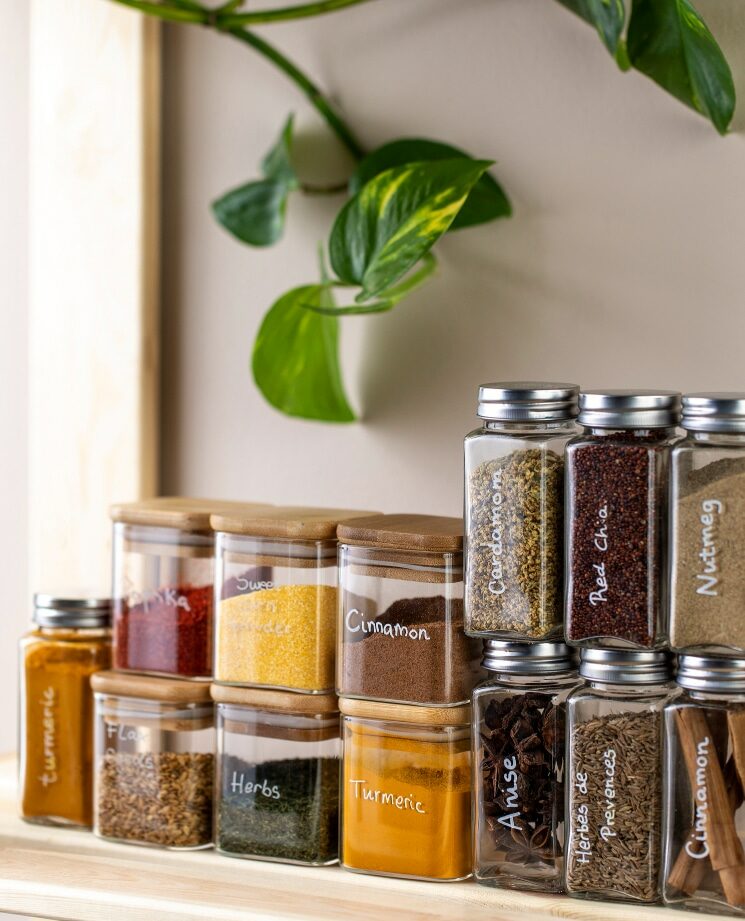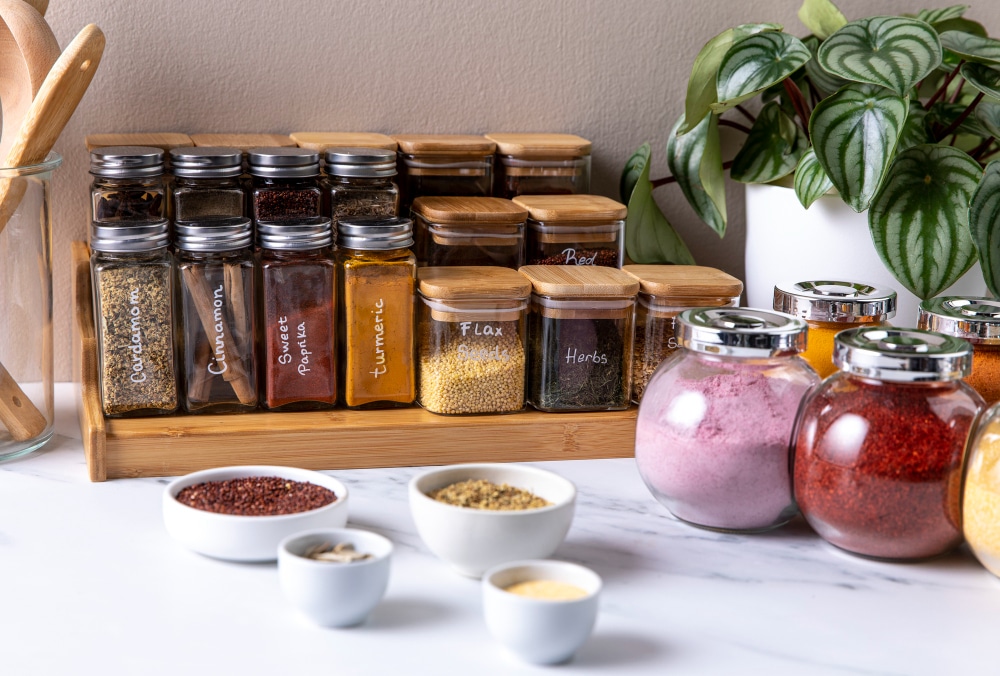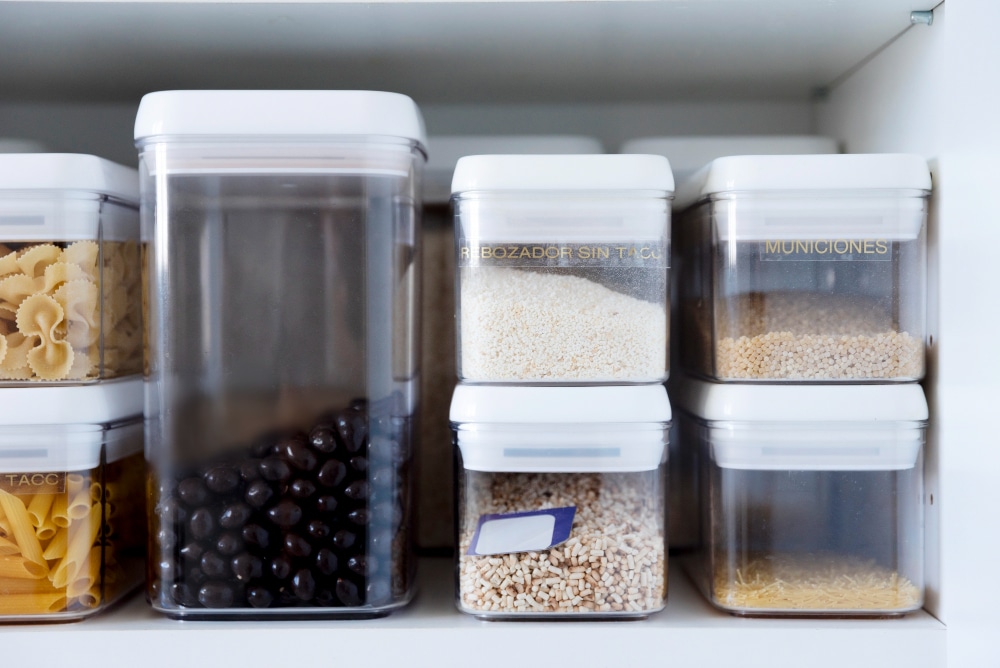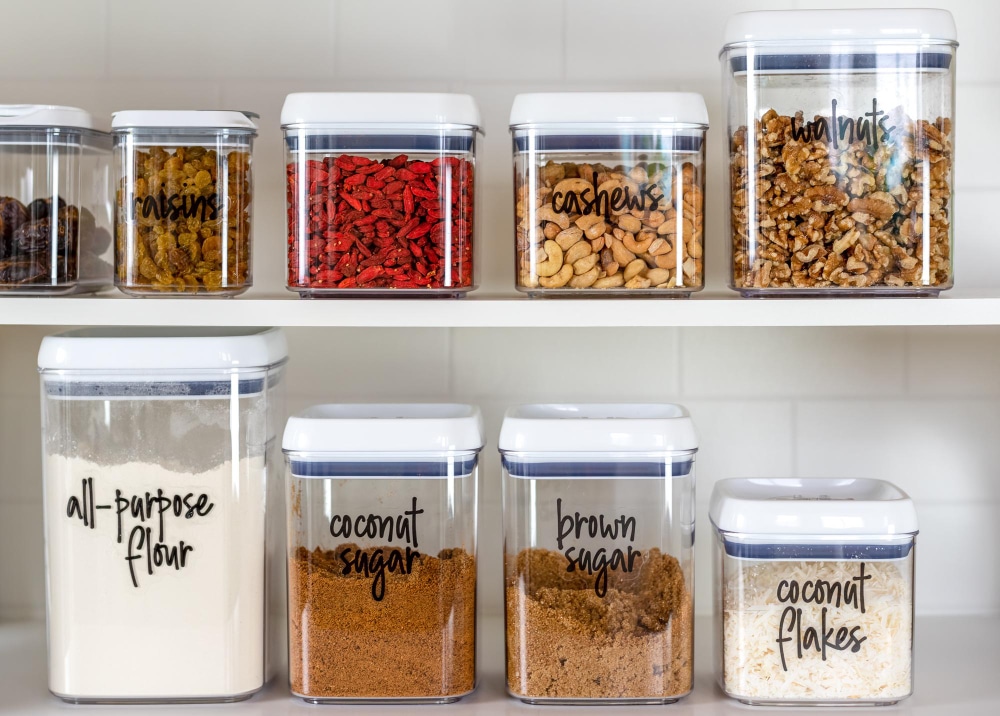
5 Critical Kitchen Pantry Mistakes and Their Solutions
A cluttered kitchen pantry can be a big headache, making it tough to find what you need when cooking or shopping. In this blog, we’ll share strategies for remodeling your pantry space smartly. Not only do we provide transformative approaches to avoid these kitchen pantry mistakes, but we also offer a detailed step-by-step guide for each solution. These guides are designed to help you handle pantry organization with ease, making sure that you can enjoy a more efficient and tidy kitchen space.
In addition with this guide, we also feature a very helpful blog on smart kitchen pantry ideas. It’s a perfect complement, offering creative solutions for an efficient and stylish pantry, blending seamlessly with our remodeling tips. Explore these ideas by clicking here.
Now let’s dive in:
Contents
- 1. Neglecting Organization
- 2. Inefficient Shelving
- 3. Not Maximizing Vertical Space
- 4. Overbuying or Stockpiling
- 5. Lack of Visibility
- 6. Inadequate Lighting
- 7. Disorganized Food Categories
- 8. Not Rotating Stock
- 9. Ignoring Zones
- 10. No Meal Planning Zone
- 11. Forgetting Labels
- 12. Neglecting Cleaning Supplies
- 13. Using Inefficient Storage Containers
- 14. Keeping It Cool to Avoid Kitchen Pantry Mistakes in Temperature Control
- 15. Not Considering Accessibility
- Conclusion:
- Frequently Asked Questions
- Q1: How often should I declutter my pantry?
- Q2: What’s the best way to keep track of what I have in my pantry to avoid overbuying?
- Q3: Can I use regular labels for my containers, or do I need special ones?
- Q4: What should I do if my pantry doesn’t have enough space for custom shelving?
- Q5: Are there any budget-friendly ways to improve pantry lighting?
1. Neglecting Organization
Ignoring pantry organization is a major kitchen pantry mistake. Without bins, baskets, and labels, chaos reigns. Regular decluttering and removing expired items are essential for a well-ordered pantry.
Solution: Implement Clear Storage Systems
Use bins and baskets for grouping items. Label each container for easy identification. Regular checks for expired items will keep your pantry fresh and clutter-free.
Step-by-Step Approach:
- Assess Your Pantry: Start by taking everything out and grouping similar items together.
- Choose Storage Solutions: Invest in bins, baskets, and labels suited to your items.
- Label and Categorize: Clearly label each bin and basket, organizing items by category.
- Regular Maintenance: Set a monthly date to check for expired items and reorganize.
2. Inefficient Shelving
Shelves that don’t fit your items waste space. Kitchen pantry mistakes often include not customizing shelves for different-sized items.
Solution: Custom Shelving
Adjust your shelves to fit everything from tall cereal boxes to tiny spice jars. This customization maximizes space and keeps items accessible.
Step-by-Step Approach:
- Measure Your Space: Get the dimensions of your pantry.
- Plan Your Shelves: Sketch a layout considering item sizes.
- Install or Adjust Shelves: Either install new shelves or adjust existing ones to fit your plan.
- Organize Items: Place items based on frequency of use and size.
3. Not Maximizing Vertical Space
Failing to use the full height of your pantry is a common mistake. This limits storage potential.
Solution: Utilize Tall Shelves and Racks
Install tall shelves and adjustable racks. Add hooks or racks on the pantry door for extra storage, making the most of every inch.
Step-by-Step Approach:
- Evaluate Pantry Height: Look at the unused vertical space.
- Add Shelving or Racks: Install additional shelves or over-the-door racks.
- Store Less Used Items High: Place rarely used items on the highest shelves.
4. Overbuying or Stockpiling
Buying too much leads to clutter and waste. Overcrowding is a frequent kitchen pantry mistake.
Solution: Mindful Purchasing
Buy what you need and keep an eye on storage capacity. This prevents clutter and ensures everything fits nicely.
Step-by-Step Approach:
- Inventory Check: Regularly assess what you already have.
- Shop with a List: Always go shopping with a list to avoid impulse buys.
- Monitor Quantities: Keep track of what gets used and adjust your shopping accordingly.
5. Lack of Visibility
Items hidden in the back of shelves are often forgotten. This kitchen pantry mistake leads to expired and unused items.
Solution: Clear Containers and Pull-out Shelves
Using clear containers and pull-out shelves makes everything visible and reachable. You’ll know exactly what you have and where it is.
Step-by-Step Approach:
- Rearrange for Visibility: Move items around so everything is visible.
- Use Clear Containers: Transfer items into transparent containers.
- Implement Pull-Out Shelves: If possible, install pull-out shelves for deeper cabinets.
6. Inadequate Lighting
Poor lighting in the pantry can make finding items difficult. This mistake affects the pantry’s functionality.
Solution: Brighten Up Your Pantry
Install LED or motion-sensor lights for better visibility. This makes finding and organizing items much easier.
Step-by-Step Approach:
- Assess Current Lighting: Check how well your pantry is lit.
- Add Lighting Fixtures: Install LED strips or battery-operated lights.
- Position Lights Strategically: Place lights so they illuminate all shelves.
7. Disorganized Food Categories
Mixing up food types creates confusion. Keeping similar items together is key to avoiding this kitchen pantry mistake.
Solution: Categorize Items
Group similar items, like grains and snacks. This organization makes finding what you need quick and easy.
Step-by-Step Approach:
- Define Categories: Decide on categories like snacks, baking supplies, etc.
- Group Items Accordingly: Organize items in your pantry according to these categories.
- Label Sections: Use labels to demarcate different sections.
8. Not Rotating Stock
Forgetting to rotate stock leads to expired food. This is a common mistake in kitchen pantry management.
Solution: Practice FIFO
Use the “first in, first out” method. Place new items behind old ones to use them before they expire.
Step-by-Step Approach:
- Sort by Expiry Dates: Check expiry dates and sort items accordingly.
- Use FIFO Method: Place new purchases behind older items.
- Regularly Check Dates: Make it a habit to check expiry dates during regular pantry checks.
9. Ignoring Zones
Not having designated zones in your pantry can lead to disarray. This kitchen pantry mistake affects the overall functionality.
Solution: Create Specific Zones
Designate areas for baking, snacks, and other categories. This makes finding and using items straightforward.
Step-by-Step Approach:
- Identify Zone Needs: Determine what zones you need, like baking or breakfast.
- Allocate Space: Designate specific areas in your pantry for each zone.
- Organize According to Zones: Rearrange your pantry based on these zones.
10. No Meal Planning Zone
A pantry without a meal planning area can lead to disorganization.
Solution: Set Aside a Meal Planning Area
Include a space for cookbooks and planning tools. This helps in keeping your meal prep organized and efficient.
Step-by-Step Approach:
- Dedicate a Space: Set aside a specific area for meal planning.
- Stock Meal Planning Tools: Keep your cookbooks, notepads, or meal prep containers here.
- Regularly Update: Keep this zone updated with your latest meal plans and recipes.
11. Forgetting Labels
Not labeling containers is a major oversight. This leads to confusion and disorganization.
Solution: Label Everything
Use labels or a label maker to clearly mark containers. This simple step can save you time and frustration.
Step-by-Step Approach:
- Choose a Labeling System: Decide on a labeling method that works for you.
- Label Containers: Mark each container with its contents and, if needed, expiry dates.
- Maintain Labels: Regularly update labels as contents change.
12. Neglecting Cleaning Supplies
Storing cleaning supplies with food can be risky. This kitchen pantry mistake can lead to contamination.
Solution: Separate and Secure Cleaning Supplies
Keep cleaning items in a distinct and safe area. This ensures food safety and pantry hygiene.
Step-by-Step Approach:
- Separate Storage: Dedicate a specific, safe area for cleaning supplies.
- Use Childproofing Methods: If necessary, implement safety locks.
- Regularly Check for Leaks: Ensure that there are no spills or leaks.
13. Using Inefficient Storage Containers
Some containers waste space. Choosing the right ones can avoid this common mistake.
Solution: Space-Saving Containers
Opt for airtight, space-efficient containers. They keep food fresh and make the best use of space.
Step-by-Step Approach:
- Evaluate Current Containers: Look at your containers and see if they are space-efficient.
- Invest in Better Options: Choose airtight, stackable containers.
- Reorganize Using New Containers: Transfer items to the new containers, organizing as you go.
14. Keeping It Cool to Avoid Kitchen Pantry Mistakes in Temperature Control
Temperature fluctuations in the kitchen pantry can significantly impact the quality of your food. This common kitchen pantry mistake can lead to food spoiling faster, affecting both taste and safety. Items like chocolates, oils, and condiments are particularly sensitive, with changes in temperature causing them to degrade or spoil. Keeping your pantry at a consistent temperature is key to preserving your food’s freshness and longevity.
Solution: Monitor Temperature
Avoid placing sensitive items like chocolate in warm spots. Keep your pantry at a consistent, cool temperature.
Step-by-Step Approach:
- Monitor Pantry Temperature: Keep a thermometer in your pantry to check.
- Adjust Storage: Move temperature-sensitive items away from heat sources.
- Regularly Check for Changes: Be aware of seasonal changes affecting pantry temperature.
15. Not Considering Accessibility
Placing items out of reach can be frustrating. This mistake affects pantry usability.
Solution: Thoughtful Item Placement
Keep frequently used items at eye level. Ensure everyone can easily reach what they need.
Step-by-Step Approach:
- Assess Accessibility Needs: Consider who uses the pantry and their reach.
- Reorganize for Convenience: Place frequently used items at eye level.
- Adjust as Needs Change: Be prepared to reorganize as family needs evolve.
Conclusion:
Frequently Asked Questions
Q1: How often should I declutter my pantry?
Answer: It’s a good idea to declutter your pantry every 3 to 6 months to remove expired items and reorganize.
Q2: What’s the best way to keep track of what I have in my pantry to avoid overbuying?
Answer: Keeping an inventory list or using a pantry management app can help you track what you have and what you need, preventing overbuying.
Q3: Can I use regular labels for my containers, or do I need special ones?
Answer: Regular labels work fine, but if you’re worried about moisture or wear, consider waterproof and tear-resistant labels for durability.
Q4: What should I do if my pantry doesn’t have enough space for custom shelving?
Answer: Utilize space-saving solutions like over-the-door organizers, wall-mounted racks, and stackable bins to maximize space without needing custom shelving.
Q5: Are there any budget-friendly ways to improve pantry lighting?
Answer: Yes, installing battery-operated LED lights or stick-on LED strips can be a cost-effective way to brighten up your pantry without expensive electrical work.






